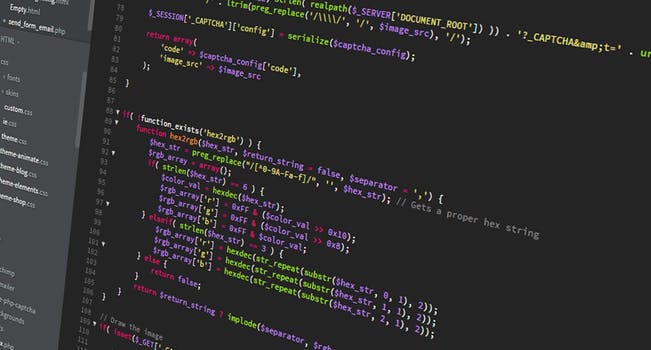TheDeveloperBlog.com
C-Sharp | Java | Python | Swift | GO | WPF | Ruby | Scala | F# | JavaScript | SQL | PHP | Angular | HTML
Golang Slice Examples
Use slices to store elements. Call the append, cap and make functions.Result: The slice contains all 5 elements. A slice is an expandable, resizable array.
Golang program that uses append on slice
package main
import "fmt"
func main() {
elements := []string{"cat", "dog", "bird"}
elements = append(elements, "fish", "snake")
fmt.Println(elements)
}
Output
[cat dog bird fish snake]
Cap: The cap() built-in tells us the internal allocation heuristics of a slice. When it runs out of room, a slice's array doubles in size.
Here: We create a slice of three elements. Its cap is 3. We then add a fourth element, and its capacity doubles to 6.
Golang program that uses cap, measures capacity of slice
package main
import "fmt"
func main() {
elements := []int{100, 200, 300}
// Capacity is now 3.
fmt.Println(cap(elements))
// Append another element to the slice.
elements = append(elements, 400)
// Capacity is now 6.
// ... It has doubled.
fmt.Println(cap(elements))
}
Output
3
6
Golang program that uses len on slice
package main
import "fmt"
func main() {
// Create an empty slice.
// ... Its length is 0.
items := []string{}
fmt.Println(len(items))
// Append a string and the slice now has a length of 1.
items = append(items, "cat")
fmt.Println(len(items))
}
Output
0
1
Golang program that loops over slice
package main
import "fmt"
func main() {
animals := []string{"bird", "dog", "fish"}
// Loop over the slice.
for v := range animals {
fmt.Println(animals[v])
}
}
Output
bird
dog
fish
Golang program that uses for-loop on slice
package main
import "fmt"
func main() {
colors := []string{"blue", "yellow", "orange"}
// Loop over all indexes with a three-part for-loop.
for v := 0; v < len(colors); v++ {
fmt.Println(colors[v])
}
}
Output
blue
yellow
orange
Quote: The built-in function make(T, args) serves a purpose different from new(T). It creates slices, maps, and channels only, and it returns an initialized (not zeroed) value of type T.
Effective Go: golang.orgArguments: The first argument to make() is the type of the slice. The second argument is the length of elements. The third is the capacity.
Capacity: The capacity of a slice can be set as a performance optimization to avoid future allocations. A slice resizes automatically.
Golang program that uses make to create slice
package main
import "fmt"
func main() {
// Create a slice of 5 integers.
values := make([]int, 5)
// Assign some elements.
values[0] = 100
values[4] = 200
// Loop over elements in slice and display them.
for v := range values {
fmt.Println(values[v])
}
}
Output
100
0
0
0
200
Tip: Copy will copy as many elements as it can. If the destination slice is smaller than the source, all elements will be copied that fit.
Golang program that uses copy built-in function
package main
import "fmt"
func main() {
slice1 := []int{10, 20, 30}
slice2 := []int{0, 0, 0, 1000}
// Display slice1 and slice2.
fmt.Println(slice1)
fmt.Println(slice2)
// Copy elements from slice1 into slice2.
copy(slice2, slice1)
// Slice2 now has values from slice1.
fmt.Println(slice2)
}
Output
[10 20 30]
[0 0 0 1000]
[10 20 30 1000]
Golang program that creates byte slice
package main
import "fmt"
func main() {
values := []byte("birds")
fmt.Println(values)
// Display length of byte slice.
fmt.Println(len(values))
// Create string copy of byte slice.
copy := string(values)
fmt.Println(copy)
}
Output
[98 105 114 100 115]
5
birds
Here: We have an int slice. We take a subslice of the middle, end and start elements. This returns new partial slices.
Golang program that uses slices within slices
package main
import "fmt"
func main() {
value := []int{10, 20, 30, 40, 50}
// Get slice of slice from index 2 to 4.
// ... Last index is exclusive.
partial := value[2:4]
fmt.Println(partial)
// Get slice from index 3 to end.
partial = value[3:]
fmt.Println(partial)
// Get slice from start to index 3.
partial = value[:3]
fmt.Println(partial)
}
Output
[30 40]
[40 50]
[10 20 30]
Here: We use two append calls to remove an element. The string "snake" is eliminated from the result slice.
Tip: The map has a special operator (delete) for element removal. Due to a map's design, this is also much faster to perform.
Golang program that removes element from slice at index
package main
import "fmt"
func main() {
// Example slice.
animals := []string{"cat", "gopher", "snake", "bird", "dog"}
// We want to remove element 2, which is snake.
removeIndex := 2
// Create a new empty slice.
result := []string{}
// Append part before the removed element.
// ... Three periods (ellipsis) are needed.
result = append(result, animals[0:removeIndex]...)
// Append part after the removed element.
result = append(result, animals[removeIndex+1:]...)
// Display results.
fmt.Println(result)
}
Output
[cat gopher bird dog]
Golang program that causes runtime error
package main
func main() {
items := []int{10, 20, 30}
// This will cause an error.
items[100] = 10
}
Output
panic: runtime error: index out of rangeHere: The iteration variable i in the loop is used to create small two-element slices.
Golang program that uses initializer with variables
package main
import "fmt"
func main() {
for i := 0; i < 3; i++ {
items := []int{i, i + 1}
fmt.Println(items)
}
}
Output
[0 1]
[1 2]
[2 3]String: We can convert the rune slice back into a string with a built-in method. A rune is a character in the string.
Golang program that gets rune slice from string
package main
import "fmt"
func main() {
// Create a rune slice from a string.
animal := "cat"
slice := []rune(animal)
// Modify the rune slice.
slice[0] = 'm';
fmt.Println(slice)
// Convert the rune slice back into a string.
original := string(slice)
fmt.Println(original)
}
Output
[109 97 116]
matVersion 1: This version of the code uses a capacity and the make() method before adding 1000 elements to a slice.
Version 2: Here we create an empty slice with no capacity. We do not call the make() method.
Result: A capacity helps. If you have an idea of how many elements will be added to a slice, specify a capacity in make().
Info: The garbage collector in Go has improved since early versions, but even in Go 1.7 setting a capacity tends to be faster.
Golang program that benchmarks slice capacity
package main
import (
"fmt"
"time"
)
func main() {
t0 := time.Now()
// Version 1: use accurate capacity for slice.
for i := 0; i < 100000; i++ {
values := make([]int, 1000)
for x := 0; x < 1000; x++ {
values = append(values, x)
}
if values[0] != 0 {
fmt.Println(0)
}
}
t1 := time.Now()
// Version 2: use empty slice.
for i := 0; i < 100000; i++ {
values := []int{}
for x := 0; x < 1000; x++ {
values = append(values, x)
}
if values[0] != 0 {
fmt.Println(0)
}
}
t2 := time.Now()
// Benchmark results.
fmt.Println(t1.Sub(t0))
fmt.Println(t2.Sub(t1))
}
Output
8.6961039s, Capacity = 1000
9.098541 s, Capacity = 0Related Links:
- Golang strconv, Convert Int to String
- Golang Odd and Even Numbers
- Golang Recover Built In: Handle Errors, Panics
- Learn Go Language Tutorial
- Golang html template Example
- Golang http.Get Examples: Download Web Pages
- Golang container list Example (Linked List)
- Golang base64 Encoding Example: EncodeToString
- Golang os exec Examples: Command Start and Run
- Golang String Between, Before and After
- Golang os.Remove: Delete All Files in Directory
- Golang First Words in String
- Golang flag Examples
- Golang Regexp Find Examples: FindAllString
- Golang Regexp Examples: MatchString, MustCompile
- Golang Index, LastIndex: strings Funcs
- Golang Compress GZIP Examples
- Golang Interface Example
- Golang 2D Slices and Arrays
- Golang Sscan, Sscanf Examples (fmt)
- Top 41 Go Programming (Golang) Interview Questions (2021)
- Golang Padding String Example (Right or Left Align)
- Golang Equal String, EqualFold (If Strings Are the Same)
- Golang map Examples
- Golang Map With String Slice Values
- Golang Array Examples
- Golang Remove Duplicates From Slice
- Golang If, Else Statements
- Golang ParseInt Examples: Convert String to Int
- Golang Strings
- Golang strings.Map func
- Golang bufio.ScanBytes, NewScanner (Read Bytes in File)
- Golang Built In Functions
- Golang bytes.Buffer Examples (WriteString, Fprintf)
- Golang Bytes: Slices and Methods
- Golang Caesar Cipher Method
- Golang Chan: Channels, Make Examples
- Golang Math Module: math.Abs, Pow
- Golang Reverse String
- Golang Struct Examples: Types and Pointers
- Golang path and filepath Examples (Base, Dir)
- Golang Substring Examples (Rune Slices)
- Golang Suffixarray Examples: New, Lookup Benchmark
- Golang switch Examples
- Golang Convert Map to Slice
- Golang Convert Slice to String: int, string Slices
- Golang Const, Var Examples: Iota
- Golang ROT13 Method
- Golang strings.Contains and ContainsAny
- Golang rand, crypto: Random Number Generators
- Golang String Literal Examples (Repeat Method)
- Golang ToLower, ToUpper String Examples
- Golang Trim, TrimSpace and TrimFunc Examples
- Golang Join Examples (strings.Join)
- Golang Len (String Length)
- Golang Convert String to Rune Slice (append)
- Golang JSON Example: Marshal, Unmarshal
- Golang Replace String Examples: Replacer, NewReplacer
- Golang nil (Cannot Use nil as Type)
- Golang Slice Examples
- Golang ListenAndServe Examples (HandleFunc)
- Golang Fibonacci Sequence Example
- Golang Time: Now, Parse and Duration
- Golang bits, OnesCount (Get Bitcount From Int)
- Golang Fprint, Fprintf and Fprintln Examples (fmt)
- Golang Func Examples
- Golang csv Examples
- Golang Fields and FieldsFunc
- Golang unicode.IsSpace (If Char Is Whitespace)
- Golang fmt.Println Examples
- Golang for Loop Examples: Foreach and While
- Golang ioutil.WriteFile, os.Create (Write File to Disk)
- Golang File Handling
- Golang range: Slice, String and Map
- Golang Readdir Example (Get All Files in Directory)
- Golang Sort Slice: Len, Less, Swap in Interface
- Golang Get Lines in File (String Slice)
- Golang Split Examples (SplitAfter, SplitN)